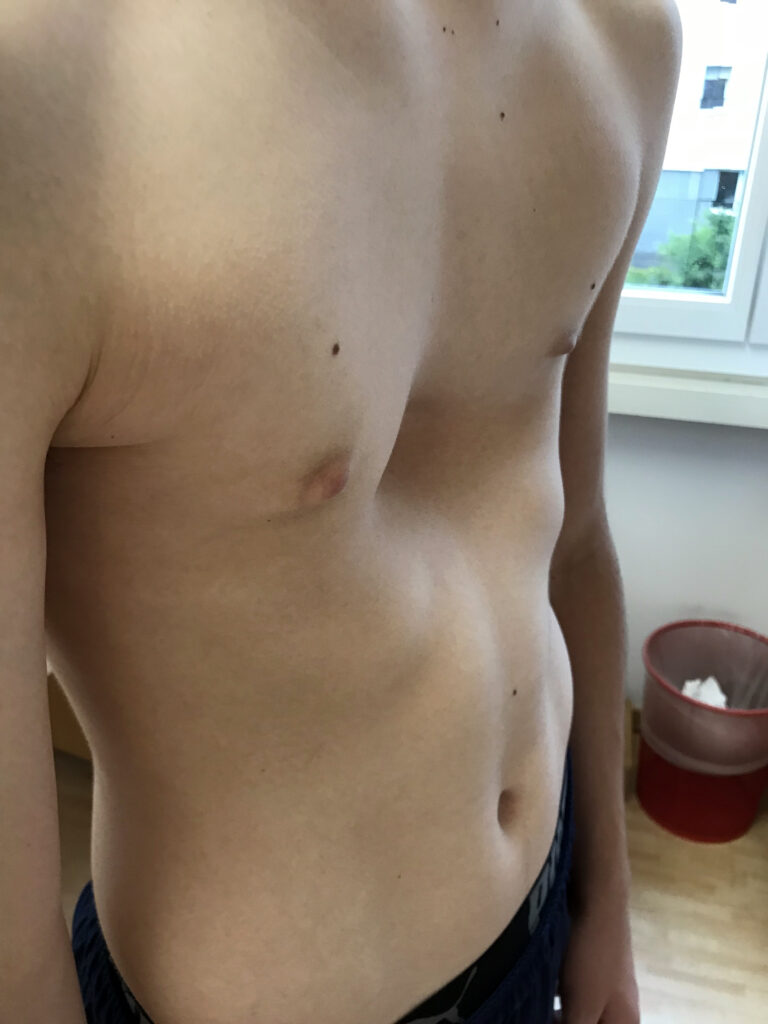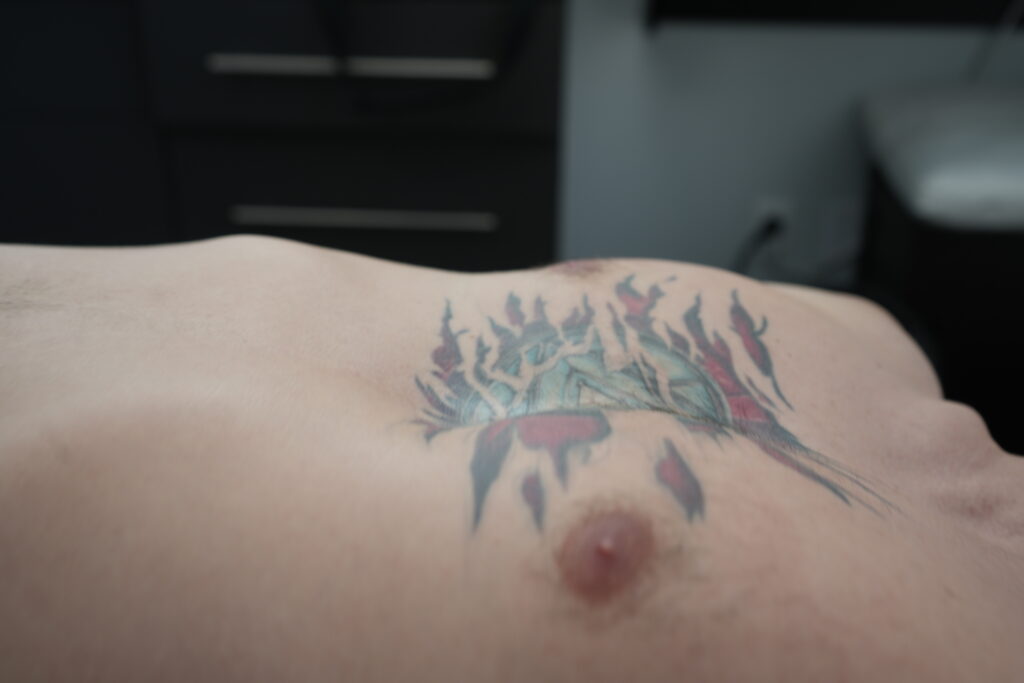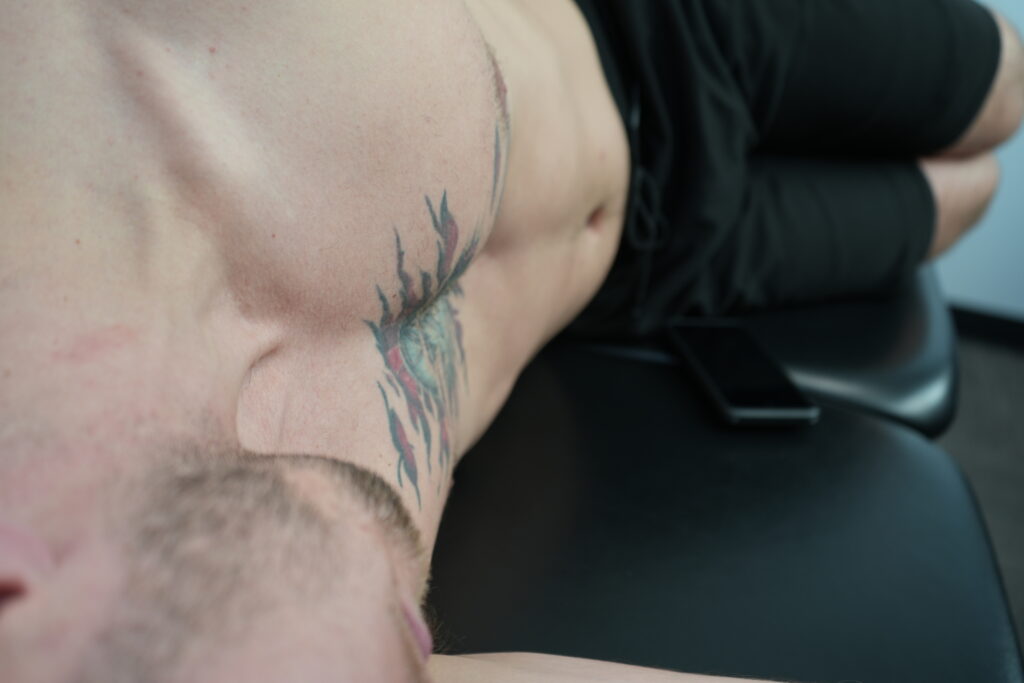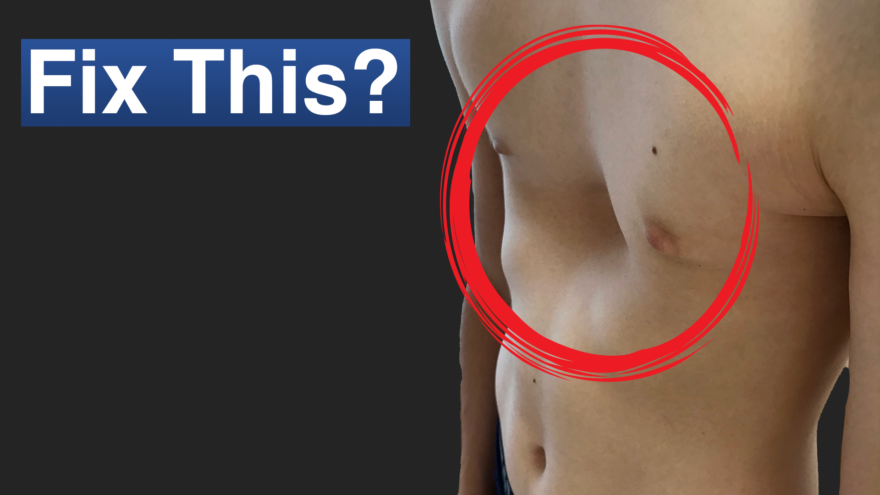Table of Contents
A Non-Surgical Game Plan for a Sunken Chest
Ever looked at a patient with a sunken chest and thought, “Is surgery the only way?”
The answer depends on what you are looking for.
In this post, we’re diving into pectus excavatum. You’ll learn what components we can (and cannot) affect. And what you should do to help these folks move better.
Check it out below.
What is Pectus Excavatum?
Pectus Excavatum, or the “funnel chest,” is when the sternum goes all shy and retreats backward. It sits posterior relative to the rest of the ribcage.

This condition affects 1 in 40-400 people. In some cases, it can affect upper body mobility and heart-lung function.
The Plot Twist: It’s Not Just Bones
Here’s where it gets juicy. The bony structure isn’t the lone villain; muscle activity plays a role too.
If frontside muscles (pecs and abs) are overactive, they pull the sternum down. This action MAGNIFIES the appearance of the pectus.


You can see in the pictures above that Chris’ pectus is quite prominent. It’s a different story when he lies on his side. Not as evident, right? That’s because the sidelying position increases front-to-back ribcage dimensions.
We can use this to our advantage!
The Science Behind It
While surgery is one way to fix the structure, you can still tackle the postural aspects. In this study, slouching (e.g. depressed sternum) reduces shoulder motion.
Let’s see if we can pump(handle) that sternum up!
The Exercises: Your Non-Surgical Toolkit
Step 1: Passive anterior-posterior expansion
This exercise squeezes the sides of the ribcage. Doing so expands the front-to-back dimensions. Bigger A to P, less depressed sternum you see?!
- Place a foam roller on the middle third of your ribcage.
- Keep your body parallel to the ground.
- Eyes look forward
- Inhale through the nose, exhale, and melt into the roller.
- Perform 5 sets of 5 breaths per side, twice a day for two weeks.
Step 2: Active anterior-posterior expansion
The foam roller was a more passive strategy to squeeze the sides. With a side plank, we will use the obliques to do the foam roller’s job!
- Top leg straight, bottom knee bent.
- Eyes straight ahead
- Contact points: Bottom outside knee and wrist/hand
- Roll forward to get the contact points and lift up!
- Inhale through the nose, exhale and apply downward pressure on the knee and wrist.
- Perform 5 sets of 5 breaths per side, twice a day for two weeks.
Prone breathing
This move helps open up the chest. The pads “push” the lower ribs back, allowing the sternum to “fall” forward.
Yeah, that’s not what’s actually happening, but that’s how I think abou the biomechanics. #dealwithit
- Lie down over two pads placed on your lower ribs and stomach
- Elbow crease in line with your mouth.
- Inhale through the nose and exhale through the mouth.
- As you exhale, press through the inner elbow and wrist. Make sure to stay heavy through the lower ribs.
- Perform 5 sets of 5 breaths per side, twice a day for two weeks.
Frog Breathing
This move is a more active version of prone breathing. The arm/leg position help reduce anterior muscle activity. It’s great for improving internal rotation.
- Knees wider than hips, feet touching.
- Hips ahead of knees.
- Contact points: inner elbow, wrist, inner knee
- Inhale through the nose, exhale and press down evenly through the contact points.
- Perform 5 sets of 5 breaths per side, twice a day for two weeks.
Bar Hang
The mother of all chest openers. This move makes the chest wall eccentric. Your only option = air into the front.
Good luck 😉
- Grab a high bar, let your body relax.
- Eyes stay looking forward.
- Inhale through the nose, long slow exhale.
- Perform 5 sets of 5 breaths per side, twice a day for two weeks.
Sum up
Yes, you cannot completely fix pectus excavatum with exercise. BUT, you can still make dramatic improvements in your mobility, posture, and comfort.
To recap:
- Pectus excavatum = sternum sits further back
- Movement limitations can occur with this presentation
- Focus on expanding the front-to-back ribcage and chest wall.
It’s not uncommon for those with pectus to also have hip mobility restrictions. I talk about the common ones here.

